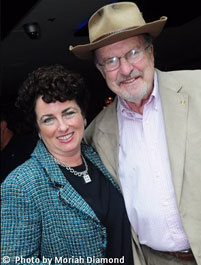
In early June, Stan, a motion producer, called me. He said that he was interested in working with me on a project that would not start until the fall. However, he called me then to make contact, introduce himself, and ask a few preliminary questions. He then inquired about my experience promoting films and in working with film publicists. He seemed pleased with my answers and concluded by saying that he would get back in touch with me by August 1.
I then placed an entry on my calendar for August 1st to remind me to contact Stan if I had not heard from him. When he did not call, I called him and he was grateful. He referred to my email, raised a few questions, which we discussed, and we agreed to work together. We concluded our agreement in no time flat and began an enjoyable, productive relationship.
I believe in sending short, direct emails. Most people skim emails and don’t read them closely so I make sure that mine are brief and to the point —usually no more than two or three sentences. People who need to exchange long emails are not a good fit for me. Recently, I stopped working with a client who sent me lengthy emails and became upset when I didn’t answer in kind. It made it difficult to work together so we agreed to go our separate ways.
People must know what they can expect when they work with you. If they are shelling out money, they have that right. Many people concentrate so much on selling themselves and telling prospects about themselves that they don’t clarify what the prospect needs and explain to the prospect what he or she will get. They should state, “Here are the terms and here is what you will receive.”
If you provide intangibles, inform the prospect exactly what they are. For example, I help clients overcome their anxiety about introducing themselves and making a powerful first impression. I don’t usually specify that or other intangibles that I will provide in written agreements, unless they are the main focus of the project. However, during our conversations, I tell my clients that, “I will help you overcome your fears so you can deliver your message more effectively.”
When you describe the intangible items that you will provide, they will become more concrete objectives. When your clients understand what you will be trying to achieve, they will work harder to accomplish them. For many clients, they will become targets, tangible goals that they will work to attain. Providing this important information will help you and your clients communicate better and help you create strong, productive working relationships.
When I speak with prospects by phone, I work from my description sheet, which I use as a checklist. Then when I send prospects a copy of my description sheet, I again clarify precisely what they can expect to receive from me. During phone conversations, I don’t recite directly from my description sheet because I won’t want to sound canned or stale. So I use the sheet as a checklist, to make sure that I cover all the important points.

Recent Comments